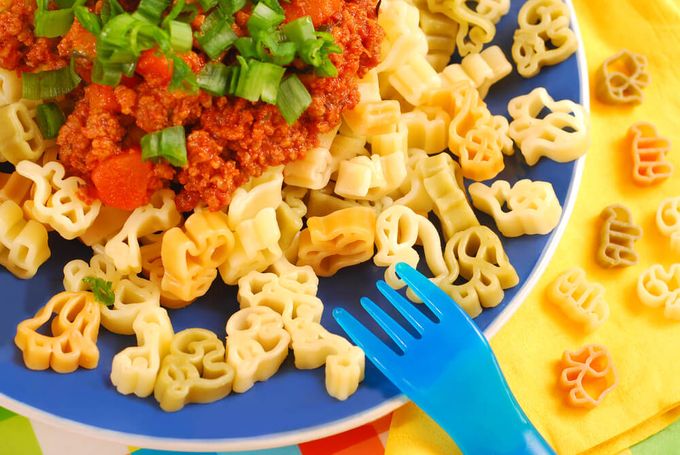4 Healthy Foods for Picky Eaters: Nutritious Ideas
Does your little one leave their plate after only taking 2–3 bites of the healthy food you've prepared? When your kid is a picky eater, every meal becomes a struggle.
Updated July 1, 2024

Now, here's the thing: many children develop more sensitive palates when it comes to texture, smell, or taste. Studies suggest that such habits tend to stick with them through life, which could make them nutrient-defficient.
You need to start correcting this issue as early as you can—preferably before your kid turns 2—to prevent it from becoming a habit. That's why we've prepared a list of tasty and hearty meals your little ones can enjoy while they slowly adapt to more variety.
» Start adapting your picky eater to healthy food with plant-based formula
1. Protein Shakes
A stable source of protein is an essential part of a kid's healthy diet. It provides your kid with enough vitamin D, which, according to statistics, 50% of children in the US are deficient in.
But preparing such a balanced meal can be tricky, especially if you don't have enough time. With Else's ready-to-drink nutritional shakes for kids, you won't waste effort in preparing a healthy recipe.
They're made from 90% whole food and USDA organic certified ingredients, and they have 50% less sugar than competing brands.
2. Combination of Veggies and Fruits
Mild flavors are your best bet when it comes to fruit and vegetables. Cauliflower, cucumbers, and zucchini have a less intense taste, and you can pair them with palate-friendly fruits like apples, pears, and grapes.
» Check out the best delicious and healthy vegetables for your kid
3. Mac and Cheese With a Twist
Does your kid love mac and cheese? You can add a healthy twist to their favorite food by adding butternut squash. This will add more nutritional content without sacrificing the taste.
» Discover 6 essential nutrients for kids
You can get as creative as you'd like. For example, instead of traditional ice cream or deep-fried french fries, bake baby potatoes with healthy olive oil and whip up some frozen bananas.
» Is your kid allergic to milk? Try these healthy dairy-free snacks
4. Crunchy Foods
Does your kid love to crunch on the cereals for breakfast? If so, you can include the following foods for a potent source of protein without losing the texture:
Cashew clusters
Cinnamon rice cakes
Snap peas
Seaweed crisps
Roasted chickpeas
» Learn how to balance your kid's diet
Tips for Including Healthy Food in Your Kid’s Diet
1. Disguise Veggies
Finely chopping and hiding vegetables in turkey meatballs will not alter the taste. Your kid will not even notice a difference and will get all the macronutrients.
» Want more variety? Add on a side dish your picky eater
You can also include healthy foods like purees made from carrots, sweet potatoes, and butternut squash into recipes like pasta sauces, soups, and even tomatoes. So, when you have some downtime, think of how you can disguise nutritious ingredients into your kid's next meal.
» Explore the micronutrient needs of infants and toddlers
2. Incorporate New Foods Gradually
To help your little picky eater adapt to new and healthy foods, freeze the meal and offer it after a few days. Sometimes, having them try it repeatedly might help. You can also let your kid choose from what you've prepared for the whole family, giving them more autonomy to explore.
» Read a detailed guide on baby frozen food
4. Work on Food Presentation
When it comes to healthy foods for picky eaters, presentation is vital. Kids are more likely to eat meals presented in a fun and playful way. For example, use cookie cutters to shape fruits and sandwiches into fun designs or serve grilled vegetables on skewers.
» Check out a list of 35 creative lunchbox arrangements
Set Your Kid up With Lifelong Healthy Habits
Mealtimes with picky eaters can be a challenge. But with a bit of creativity and these healthy food ideas, you can whip up meals that are nutritious and delicious. Stay persistent; involve your kid in the prep process. With a positive approach, you can set them up with lifelong healthy eating habits.
Have a baby you're about to introduce to solid food, but you're worried if they'll be picky? Try the first infant cereal in the US granted the Clean Label Project Purity Award—with a 100% money-back guarantee.
It combines plant protein, healthy fats, gluten-free carbs with natural fibers, and 20+ essential vitamins and minerals.
» Introduce your picky eater baby to solid food healthy infant cereal
The content and advice provided in this article are for informational purposes only and are not a substitute for medical diagnosis, treatment, or advice for specific medical conditions. Always consult a pediatrician to understand the individual needs of your child.










